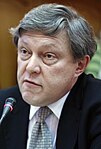Russian legislative election, 1995
|
|
|||||||||||||||||||||||||||||||||||||||||||||||||||||||||||||||||||||||||||||||||||||
|---|---|---|---|---|---|---|---|---|---|---|---|---|---|---|---|---|---|---|---|---|---|---|---|---|---|---|---|---|---|---|---|---|---|---|---|---|---|---|---|---|---|---|---|---|---|---|---|---|---|---|---|---|---|---|---|---|---|---|---|---|---|---|---|---|---|---|---|---|---|---|---|---|---|---|---|---|---|---|---|---|---|---|---|---|---|
|
|||||||||||||||||||||||||||||||||||||||||||||||||||||||||||||||||||||||||||||||||||||
|
All 450 seats to the State Duma 226 seats needed for a majority |
|||||||||||||||||||||||||||||||||||||||||||||||||||||||||||||||||||||||||||||||||||||
| Turnout | 64.4% | ||||||||||||||||||||||||||||||||||||||||||||||||||||||||||||||||||||||||||||||||||||
|
|||||||||||||||||||||||||||||||||||||||||||||||||||||||||||||||||||||||||||||||||||||
|
|||||||||||||||||||||||||||||||||||||||||||||||||||||||||||||||||||||||||||||||||||||
Gennadiy Seleznyov
Communist Party
Parliamentary elections were held in Russia on 17 December 1995. At stake were the 450 seats in the State Duma (Gosudarstvennaya Duma), the lower house of the Federal Assembly of Russia.
The election law adopted for the 1995 election was similar to that adopted for the 1993 election, with some minor modifications. First, to secure a place on the proportional representation ballot, parties had to have registered with the Ministry of Justice no later than six months before the election, and the number of signatures they had to gather rose from 100,000 to 200,000. Second, invalid votes were now included in the calculation of the 5.0 percent threshold. Third, on the single-member district ballot, party endorsements of candidates were indicated.
Out of the forty three parties and coalitions contesting the elections, only four cleared the 5% threshold to qualify for the proportional seats.
Our Home – Russia had weightier resources and soon acquired the nickname of “party of power” for its reliance on elite political and economic office holders. It was also referred to as “Our Home Is Gazprom” for its close ties to Gazprom’s substantial financial resources. Most of the cabinet ministers joined the bloc, and a number of business leaders and regional political elites affiliated with it. However, almost no other parties entered it, and many SMD candidates who had initially affiliated with the party soon left it. One of the early parties to enter the bloc, Sergei Shakhrai’s Party of Russian Unity and Accord, also deserted it in August. In the election, the Our Home Is Russia bloc took 10.1% of the vote, enough to form a faction in the Duma but not enough to serve as a dominant or pivotal force in parliament or in the regions. At its peak, the party claimed the membership of around one third of Russia’s governors. However, both the center and regional elites made only ephemeral commitments to Our Home is Russia.
...
Wikipedia





